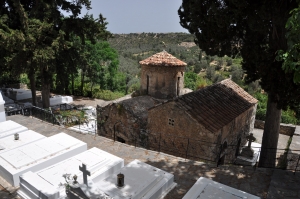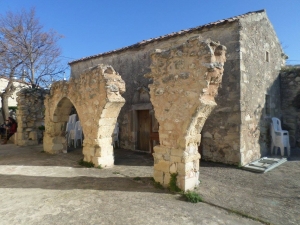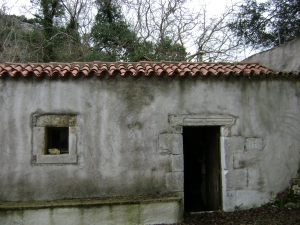The part of the E4 trail that starts from Margarites and finishes at Houmeri is mostly along the main road connecting the villages of the area (Pigouniana, Orthes, Kalandare, Kalamas, Pasalites). The highlights of the route include the ceramic centre of Margarites village, the well preserved samples of the tradional house architecture and some important churches.
The ancient bridge of Eleftherna was built in the first half of the 4th century and is preserved in excellent condition, crossing the torrent Chalopotas. Nearby there was another twin bridge that has not survived. It has a length of 9.5 meters and a width of 5.25 meters. It has a characteristic shape, as there is no arch, but a triangular opening (ekforic architecture).
The church of St. John Baptist is located in the center of Margarites and is a single – aisled vaulted church. Below the plaster, frescoes of 1383 have been revealed.
At position Katsivelos in Ancient Eleftherna the archaeologists have revealed the ruins of an imposing basilica. The basilica was built on the site of an older temple of the 3rd century BC, probably dedicated to Hermes and Aphrodite. The basilica was founded by the Bishop of Eleftherna Efratas around 450AD and was dedicated to the Archangel Michael.
The double church of the Transfiguration of Christ and Saint Anne is located in the cemetery of the village Ancient Eleftherna. The original church of the 10th century bears frescoes of the 12th century, has a dome and was built on the ruins of an older temple of the 6th century.
The Church of St. John the Theologian in Margarites is located at the southwest side of the village. It is a single-room vaulted temple and its interior bears traces of frescoes and an impressive stone iconostasis (icon shrine). On each side of the temple there are three blind arches.
Inside Margaritsano gorge we meet the Byzantine church of Agia Paraskevi, which can be accessed from Pigouniana via a dirt track. This is a small single-nave barrel-vaulted temple with its interior adorned by frescoes of the Venetian era.
- 1
- 2












































































































